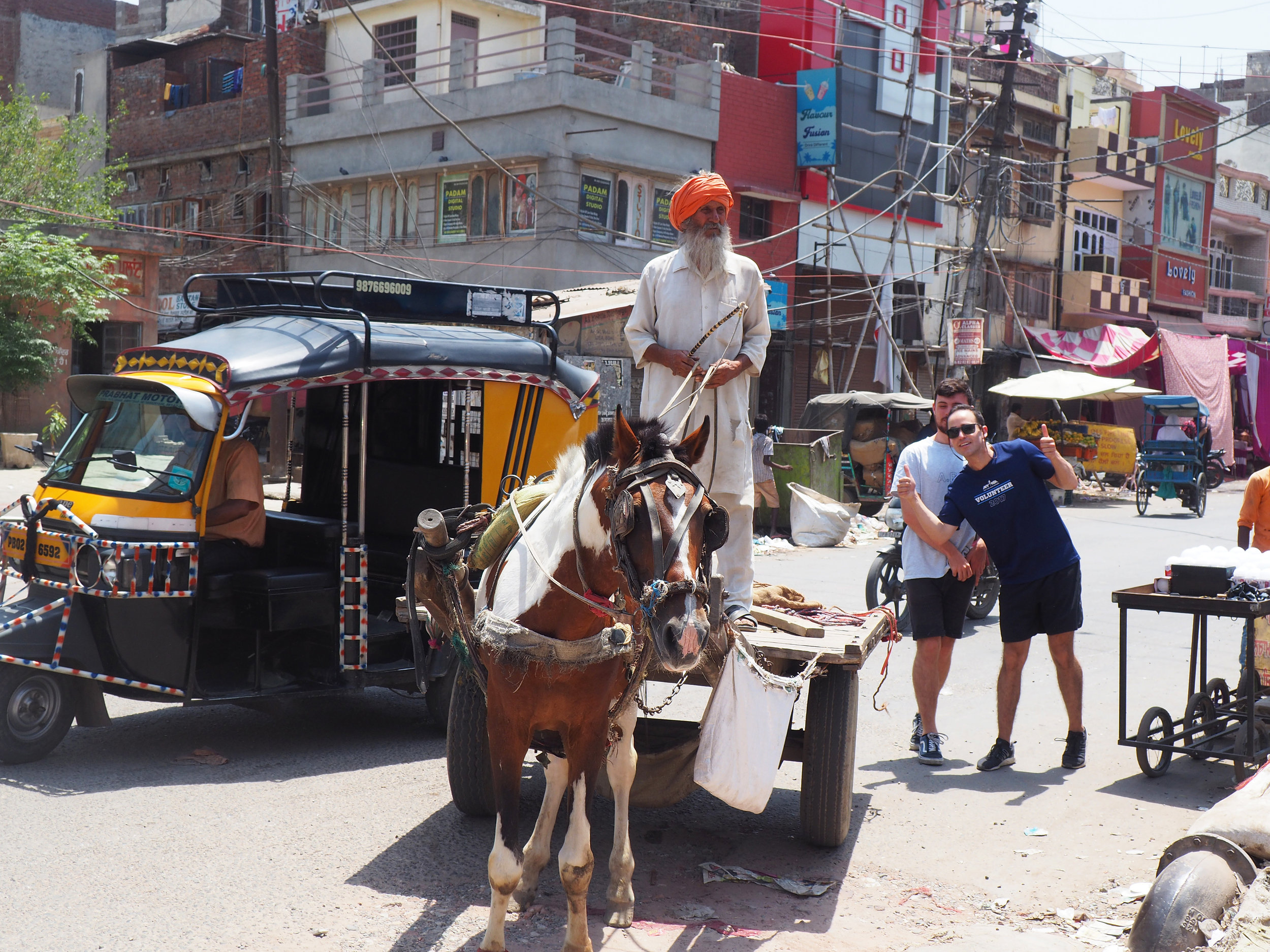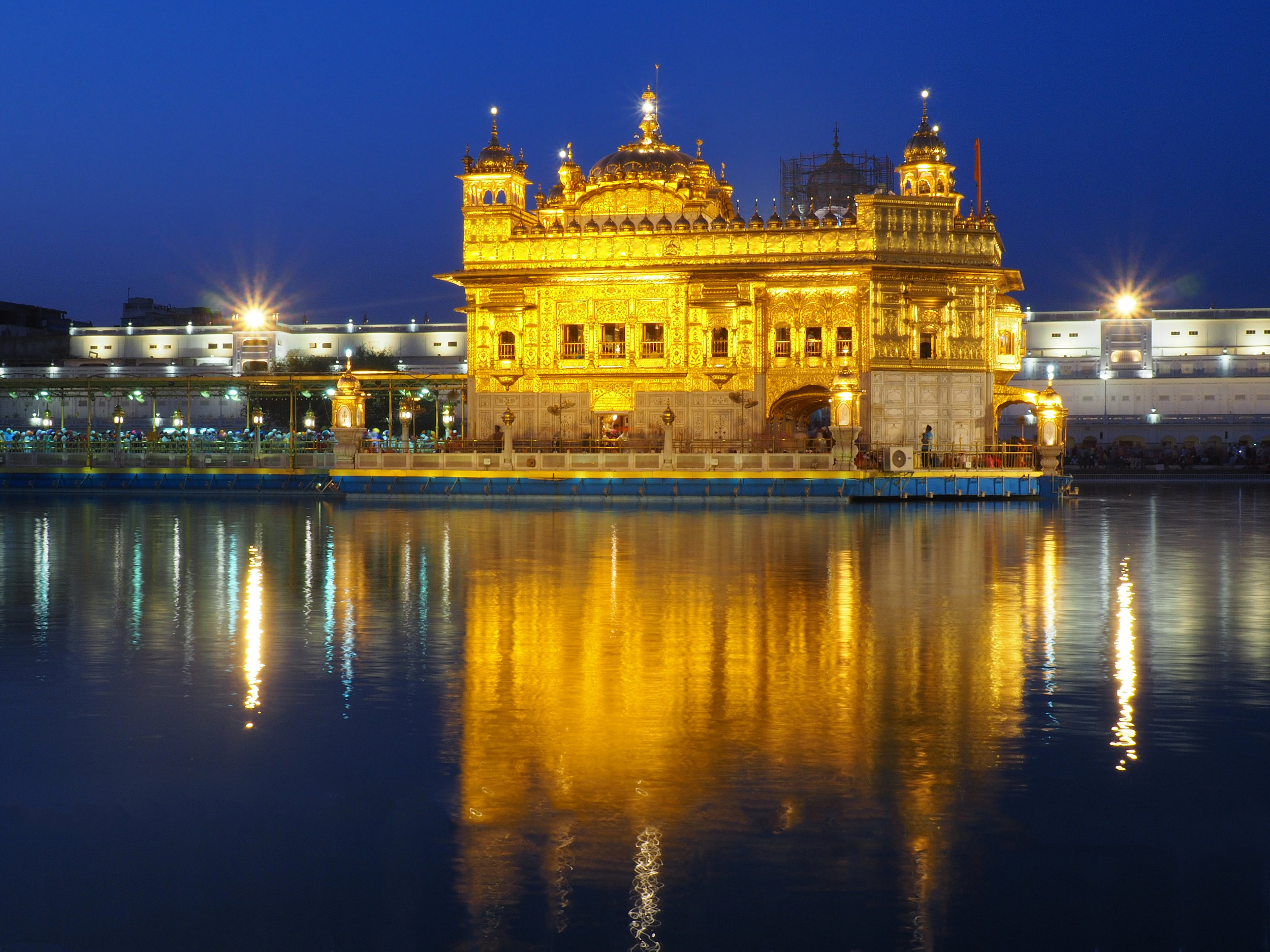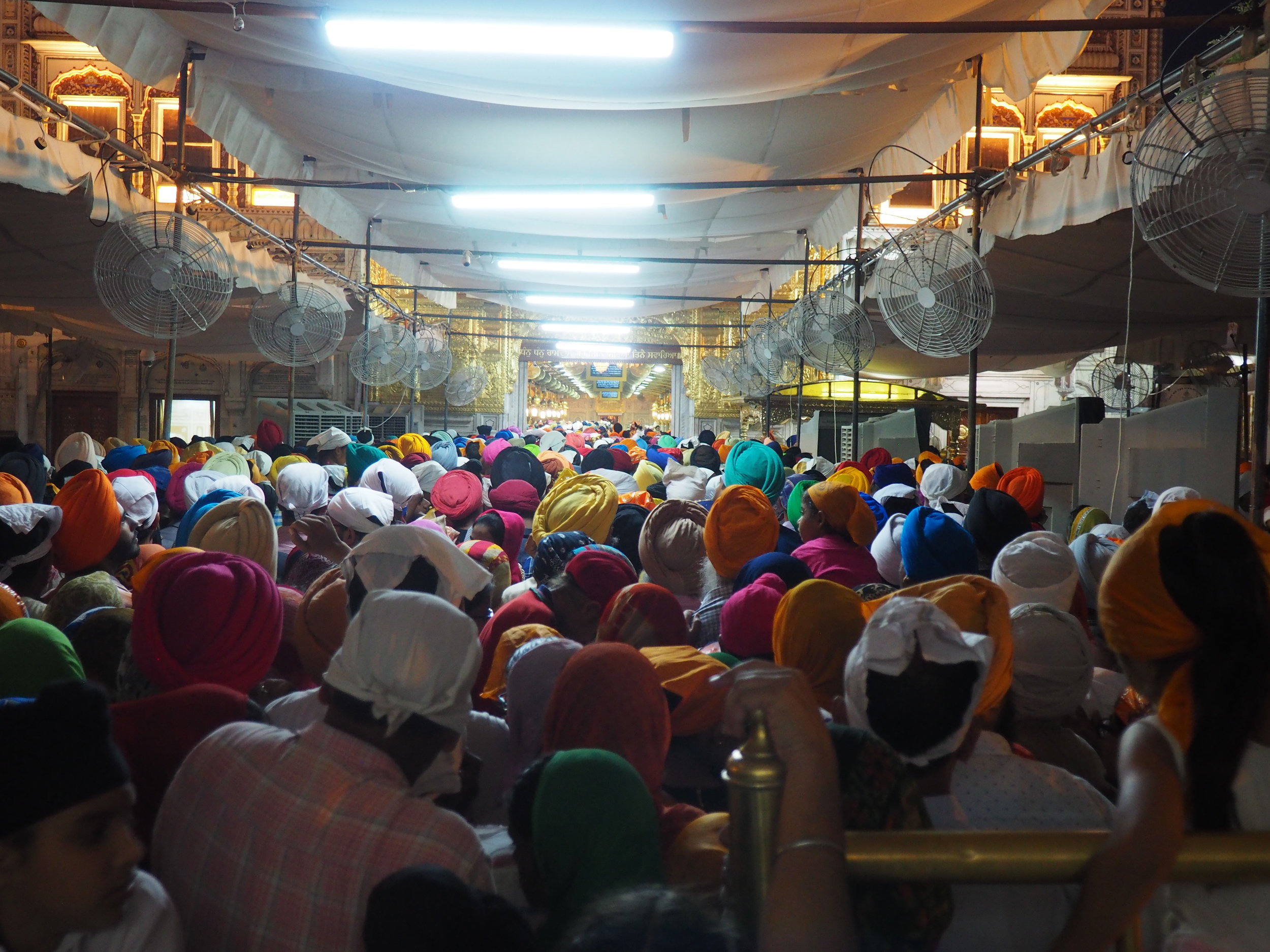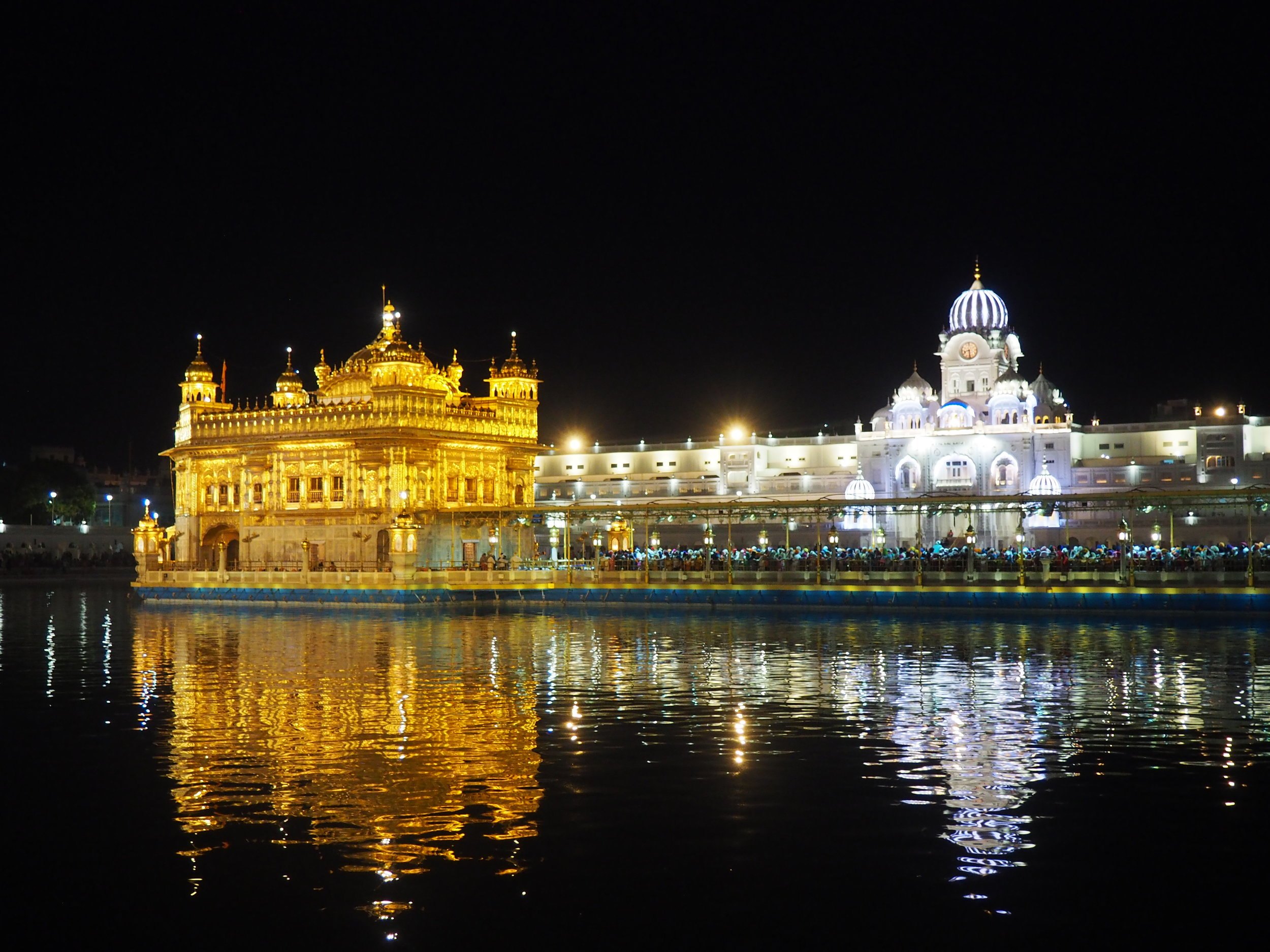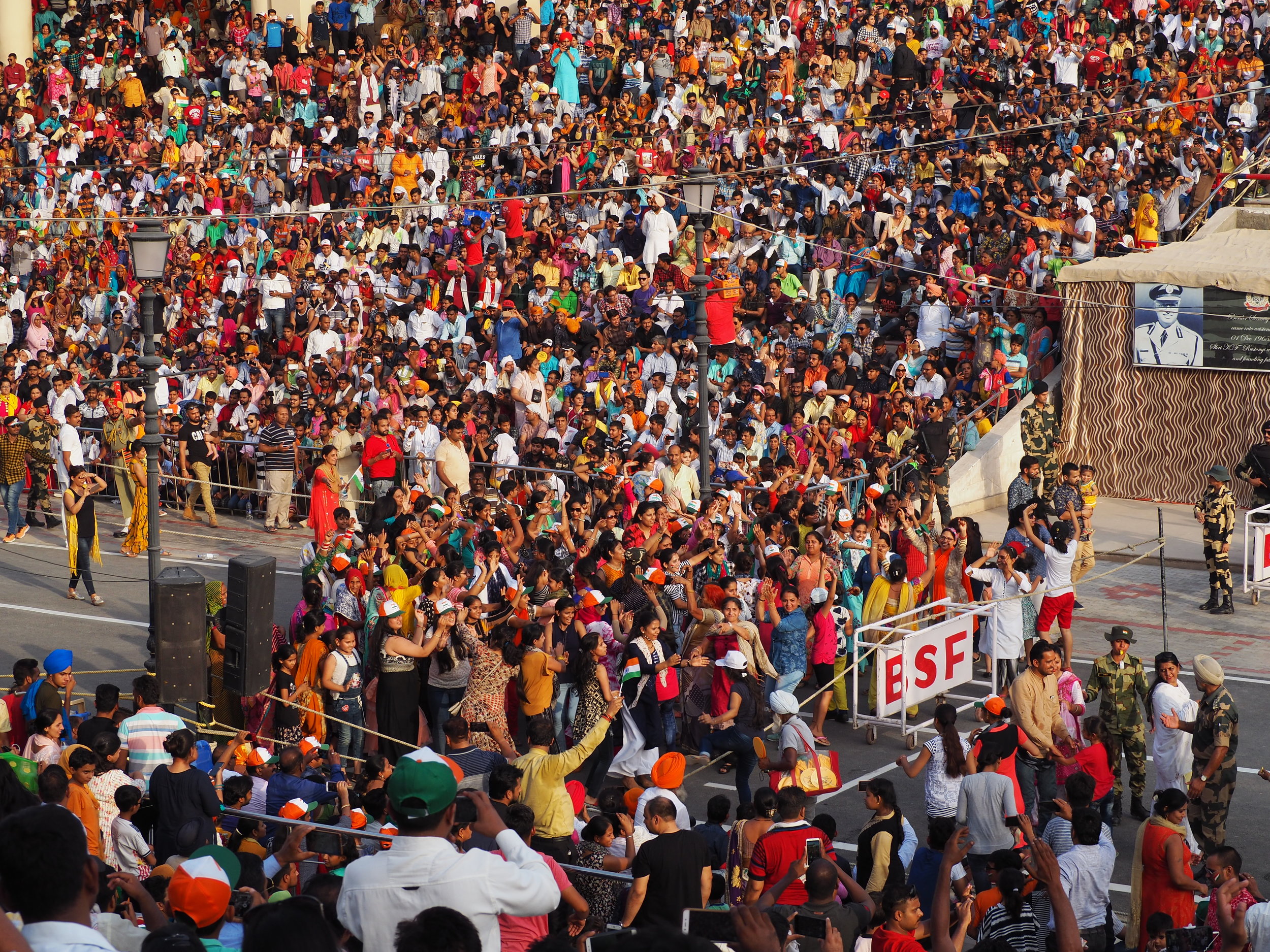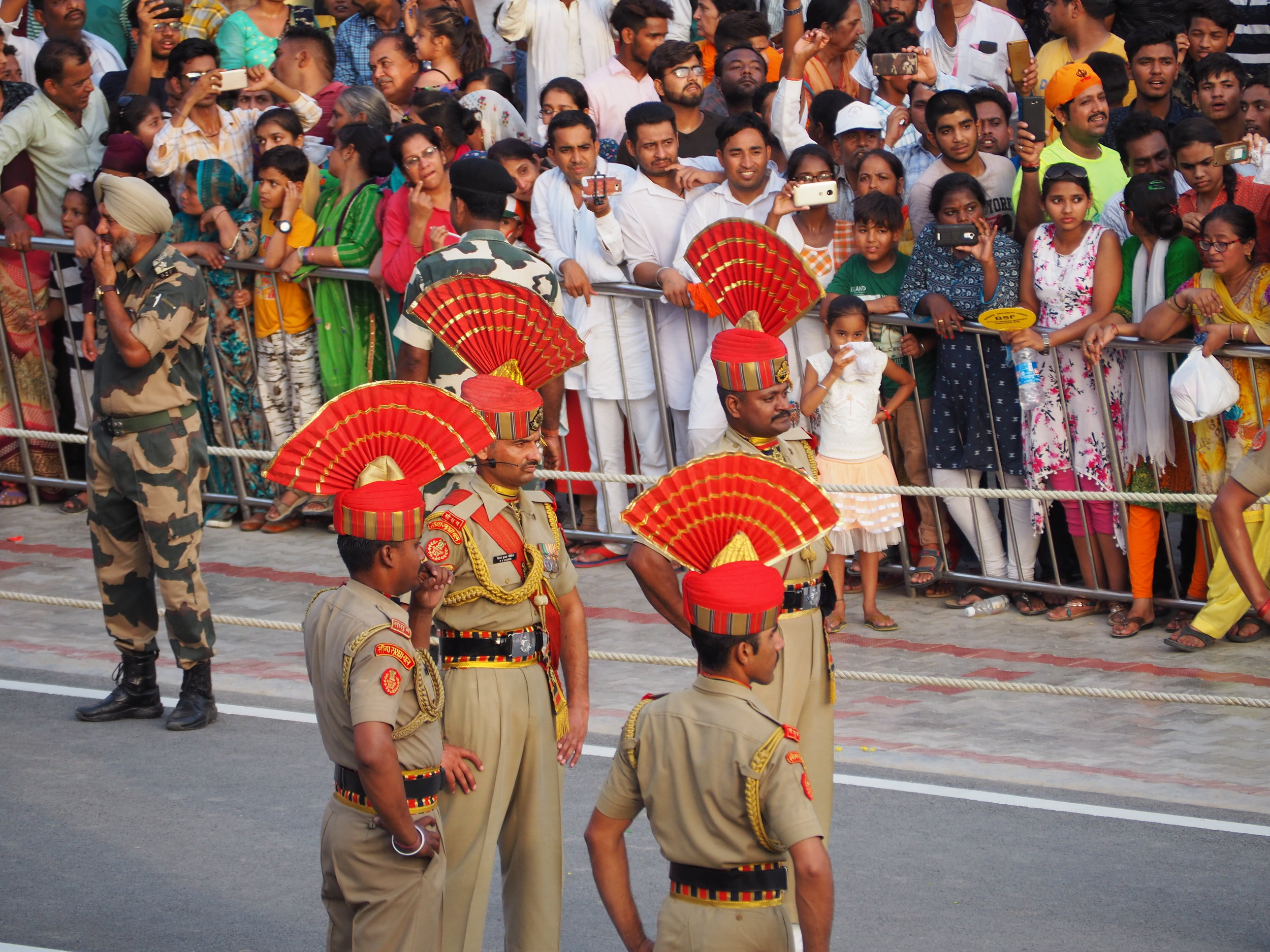After our exhausting trip to Ladakh, Stefje and I found an Indian hill station to relax and recover while Isaiah darted around the Southern half of the country. With 5 days in the comforting embrace of Western amenities, yoga classes, and strong coffee in McLeod Ganj behind us, the trip to Amristar was a shocking cultural readjustment. Suddenly honking horns and clogged highways took over our ears and eyes, reminding Stefje and I that we were definitely still in India.
Along the way we crossed the border from the luscious mountains of Himachal Pradesh to the wide flat agricultural fields of Punjab, India's bread basket. Punjab is also home to the highest concentration of Sikhs in India, so the inhabitants wore turbans and sported twirling mustaches and flowing beards as they moved through the chaotic streets of the city.
As soon as our feet touched the ground, we were overwhelmed by the hubbub of traffic and the intense pre-monsoon heat which brought the temperature to a boiling 100 degrees Fahrenheit. Luckily we found comfort in the air conditioned comforts of the Jugadus hostel, where we met up with Isaiah as he returned from a weeklong sojourn with other Colombia business school students.
The three of us set off just before sunset to take in the streets. Pedestrians wove through the traffic with ease, navigating the throngs of tuk tuks, motorbikes, bicycles, busses, trucks, cows, oxen, and horse drawn carts. The horses were urged forward by imposing locals who stood atop wooden platforms with grace and whipped their animals with suprising force.
Equally impressive were the bicycle rickshaws, which propelled heavy cargoes of both people and goods with the strength of the drivers' rippling leg muscles. Because Amristar is home to the holiest sight of the Sikh religion, it attracts both pilgrims and charitable works in outsize fashion. The most prevalent of the do-gooders were tents of people preparing and distributing free juice in the middle of many major thoroughfares.
Although the stalls caused significant traffic jams, everyone was eager to chug greedy gulps of pulpy sweetness in the sticky heat of the day. Just as the last light of the day disappeared from the sky, we made our way into the Golden Temple complex.
Everyday more than 100,000 people visit this sacred destination, which was constructed in 1581 and has been a pilgrimage location ever since. The temple sits in the middle of a reflecting pool, ensuring that every angle was doubly beautiful due to the shimmering reflection on the holy water's surface.
Surrounding the water was a walkway that we began circumambulating with thousands of worshippers. Periodically the crowd would all stand or kneel to kiss the floor in unison as the evening prayers carried along, reminding us of the sanctity of the venue.
At the back edge, we encountered the long walkway which leads to the inner golden palace. The line to get inside and view the ancient scripture which represents the knowledge of Sikh gurus was patently absurd. Bodies squeezed and purshed against each other in a single gyrating mass, with arms sticking out over the railings and tubans appearing above the mess.
These worshippers would withstand 6 hours of the madness for just a few precious moments inside.
Although the presence of so many people was disconcerting at first, we soon relaxed with the realization that everyone was friendly and helpful. Wide smiles flashed across faces as people caught my eye, and more than once we were pressed into holding babies for photoshoots.
The generosity of the people was apparent everywhere; free water was distributed in each corner and the complex also houses a dining hall which serves an astonishing 80,000 free meals per day. We made our way into the eating area by fighting through a swarming mass of people, then quickly found a spot to sit cross-legged on the floor with a few hundred strangers.
Servers came around with huge bucketfulls of rice, lentils, and porridge, ladling them onto our metal tins with satisfying smacks. As we dug in, my mind tried to wrap itself around the logistics of the operation.
Raw materials like lentils, okra, and flour are donated to the kitchen by local farmers, then a small army of volunteers prepares the food every day by stirring the lentils in vats larger than jacuzzis and hand-buttering stacks of chapati.
As we made our way out of the temple, the moon rose over the whitewashed outer walls of the temple, flooding its light across the cool marble floor and giving us another view of the area's sublime, spiritual beauty. The temple glittered like a magnificent jewel in an oasis of peaceful waters, surrounded by the chaos of people all around yet undisturbed in its serenity.
On our second day in Amristar we got up close and personal with Punjabi flavors by signing up for a cooking class at the hostel. We began by patrolling the local markets on the search for cauliflower, onions, potatoes, yogurt, and flour to form the base of our meal. The flour was freshly milled and the yogurt churned in a massive tub at one of the many pungent local dairy stalls.
The main streets of Amristar make it easy to shop local and healthy: small carts are overflowing with colorful fruits and vegetables everywhere we turned. Back at the hostel, we chopped the vegetables, stir-fried them with aromatic spices like turmeric, chili powder, and ginger, then set the pan on the back burner to simmer while we made chapatis.
Consisting of just water and flour, the chapati is a deeply humble Indian flatbread which is a foundational staple of cuisine across the subcontinent. We mixed the two ingredients, rolled them into pancakes, then placed them on a flattop grill on high heat for just a few seconds. The results were mixed and the quality lacking compared to restaurant grade chapati, but we were nonetheless pleased with the outcome as we chowed down on a homemade lunch.
As the afternoon rolled around, the three of us joined five other westerners and two domestic tourists and we all piled into a pair of tuk-tuks and set off for the border with Pakistan to partake in the famous flag lowering ceremony.
The city slowly faded away, replaced at first by farmland and then by numerous army bases as we approached one of the world's most heavily disputed borders. Even before entering, the environment felt like attending an international sporting match: Indian hats and flags were for sale, hawkers sold popcorn, and a huge crowd moved en mass through an expansive parking area. Eventually we turned a corner and a massive multi-tiered stadium came into view, framed by an immense flag of Pakistan waving listlessly in the distance.
We entered the stadium and turned our heads round and round in wonder: thousands of Indians now surrounded us on three sides, with the only opening leading into Pakistan. On the other side, the crowd was smaller but even more tightly packed; men in long robes and tunics stood almost on top of each other to fill every possible viewing angle.
The large horseshoe-shaped structure was absolutely brewing with energy. A master of cermonies clad in all white played the left and right sections off of each other, imploring the already energetic participants to cheer guttural screams and start loud chants.
By jumping, marching, and throwing his hands up with violent force, the energy was imparted into each and every onlooker. While we waited in the sweltering heat with thousands of sweaty Indians, it was an excellent opportunity to observe the diversity of people that call India home. Women wrapped their shoulders and legs in multi-colored saris, exposing bulging midsections. The Punjab male's most impressive feature is the long twirling mustauche, which flares out and curls upwards when properly tamed by its owner.
The most remarkable aspect for me was the prevalance of the mobile phone. Every single moment of the ceremony was captured by thousands on video, and we personally witnessed individuals who somehow managed to capture more than a hundred selfies during the 2 hour period.
A long wait gave way to the beginning of the show. Pakistan kicked things off with impressive twirling and flag waving from a one-legged man, who was followed up by two beefy flag bearers who flexed in fierce poses to huge rounds of applause from the far side of the crowd.
Not to be outdone with flag antics, India lined up hundreds of young women to run in a short relay while waving their national colors. For a country that primarily treats their daughters and wives as invisible second-class citizens, their celebration in this context was a stunning contradiction.
When the long line finally exhausted itself, the women raced to form a giant dance party in the middle of the stadium, singing along and rejoicing exuberantly to the likes of "Jai Ho" and other classic hits from Bollywood films.
The crowd took it to another level at this point, jumping with literal joy in groups and filming the entire celebration of patriotism.
With the preamble complete, it was time for the soldiers to come out. On the Pakistani side they were clad in all black, with two females strutting in unison towards the gate. A phalanx of Indians soon formed on our side, adorned with bright red headdresses that made them look like human peacocks.
In a parade march of incredible intensity, they high stepped their legs and kicked out with force while engaging in a choreographed repertoire with their Pakistani counterparts. One by one, they strutted towards the high arching gate and finished off kicks by flexing their arms in a scene reminiscent of a sporting match's pre-game introductions.
While knees rubbed against noses, guns flew around shoulders, tight salutes were exchanged, and gut-wrenching screams were hurled across the border, both crowds exploded with energy. Despite the overwhelming feeling of competition between the two countries which have spilled so much bloodshed in defense of their storied border, there was a single moment of unification. A chant of "HINDU-STAN' began as a murmur and quickly surged to dominate both sides of spectators, a reminder that these two disparate countries share a joint past as a united empire.
The ceremony concluded with the lowering of flags which were placed in the border's no man's land. As the gates swung open, the crowds screamed with increased fervor but the soldiers stood stoically while one member of each contingent released the flags in perfect unison.
Soon the gates were closed for the day and we began streaming for the exit with a huge mass of humanity. It was another two hours of walking and traffic until we were wearily deposited back at our hostel, depleted with energy but rejuvenated by a sense of wonder after having experienced another unforgettable experience in India.
We capped our time in Amristar with a visit to the mall, which meant while Stefje went searching for normal clothes Isaiah ended up in the games room, where he somehow signed us up for a stint in the cricket batting cage. Although we both clocked in on the cricket skill scale somewhere between horrible and atrocious, you can't deny that we looked great doing it!


